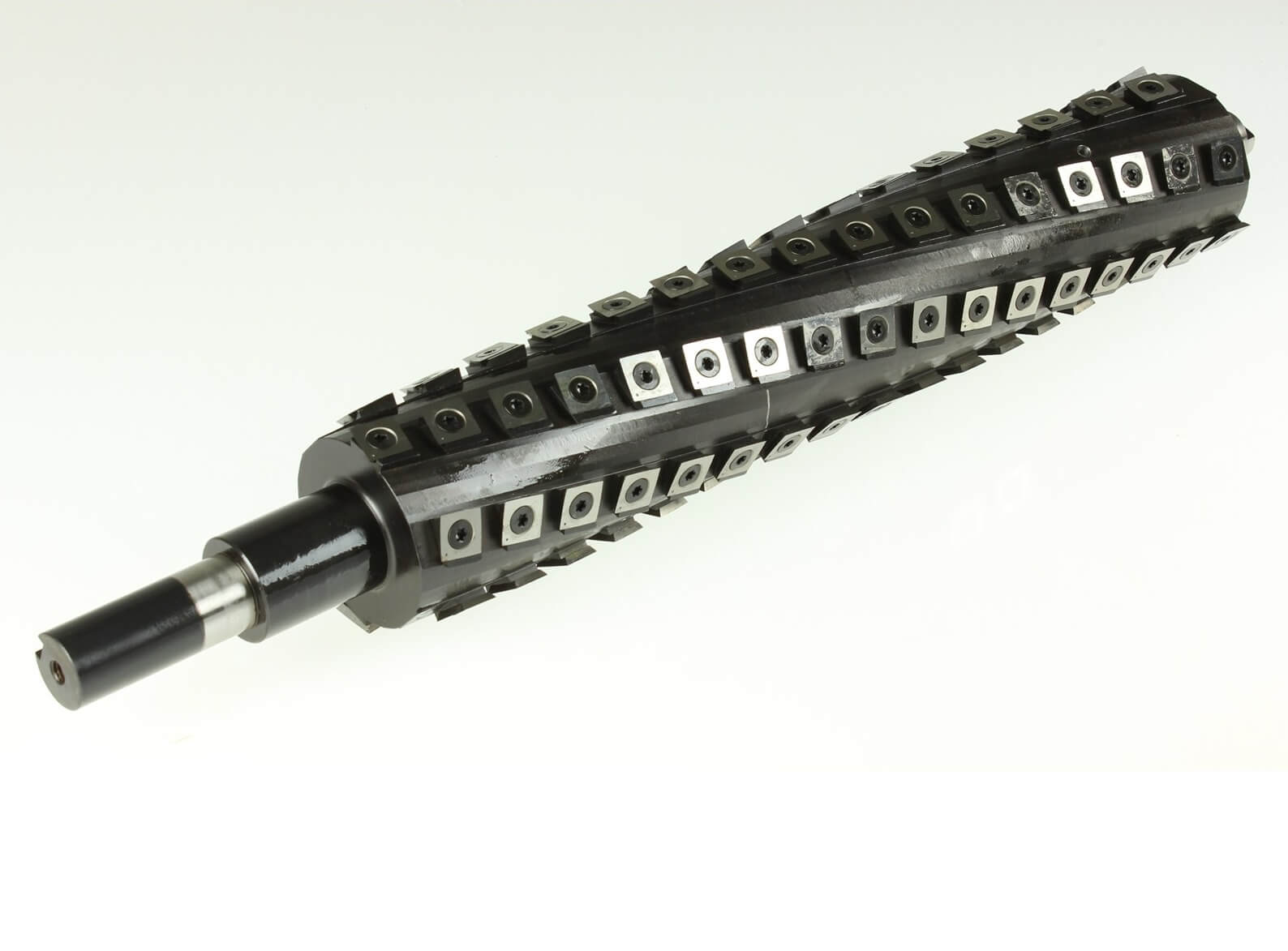So…spiral heads!
They're all the rage at the moment and give it another few years, I’m fairly sure spiral heads will be the only thing available on the market because they are quite a big improvement on the old style straight bladed unit.
Today we’re going to give you a quick rundown and demonstration of the difference of these two forms of cutterhead. Spiral heads these days are available on thicknessers and jointers and they work much in the same way as a spiral cut bit for a router.
The advantages of using a thicknesser with helical spiral cutterheads
So, the advantages of using a spiral head cutter as opposed to a standard straight blade: your standard straight blade, when it cuts the whole length of the blade, hits the timber at once and creates a bit of a chopping effect.
If you look closely you will see the small ripples appearing on the surface of your workpiece as it comes out with the spiral head as opposed to having one long blade.
You've got lots of small little tungsten carbide blades and these often have multiple surfaces so when you do need to change your blade, rather than having to take out the whole blade and get them machined or replace them with new ones you can just turn your small blade around and it'll give you multiple cuts from the same little cutter knife.
This also is a benefit because if you've missed a piece of metal or something in a piece of reclaimed timber, I mean ideally, we'd get that out but there are circumstances where that may happen and rather than it destroying your whole blade, it’ll only destroy a small section so it's quite quick and easy to change out, meaning your downtime is very low.
Replacing thicknesser tungsten carbide cutters: the extra lifespan on a helical spiral head
Little tungsten carbide cutters can be replaced very, very simply and easily. It's just an allen key! Take the cover off with two little bolts and you're good to go.
Noise is also one of the benefits of using a spiral head over the traditional straight blade unit, which when it's chopping, does make quite a loud noise. This is reduced with a spiral head unit. I’ve tested both a spiral and a straight cutterhead thicknesser in the video above and I’ll give you a run down of the pros now.
So we have put these machines to a fair test with the fact that we've put this Australian hardwood through that does have a little bit of fiddly grain running through it, pretty much the full width of both of the machines, and they've both performed really well - I'm very impressed.
So you can see here with the board that's gone through the straight blades: although it still has got a fairly good finish, you will see there is some tear out on the bits where the grain gets a little fiddly and there's a little bit of snipe on both ends of the board and you can see a little bit of those ripples that I was talking about from the chopping action of the straight blades.
Comparing a spiral head cutter to a straight blade thicknesser

Now in comparison to that, on the other side here this is the side we've used the spiral head for. It's exceptionally clean there is no tear out that I can see at all and the snipe is very, very minimal - there just a quick oil with a bit of sandpaper, a couple of grits and you're pretty much ready to go…it wouldn't take much work from here to get to the stage you need it to be at all. It might not be super easy to hear the difference between the spiral head and the straight blade on the video, but when you're using it on the bigger machines especially for 16 or 20 inch thicknessers, the spiral head creates a massive reduction in sound - it's a big, big improvement.
Maybe we'll do a video on that in the future so have a closer look at either of these thicknesses or to check out our range of other spiral head and straight bladed units come down to our store and have a chat in either Melbourne or Perth or check us out online.

